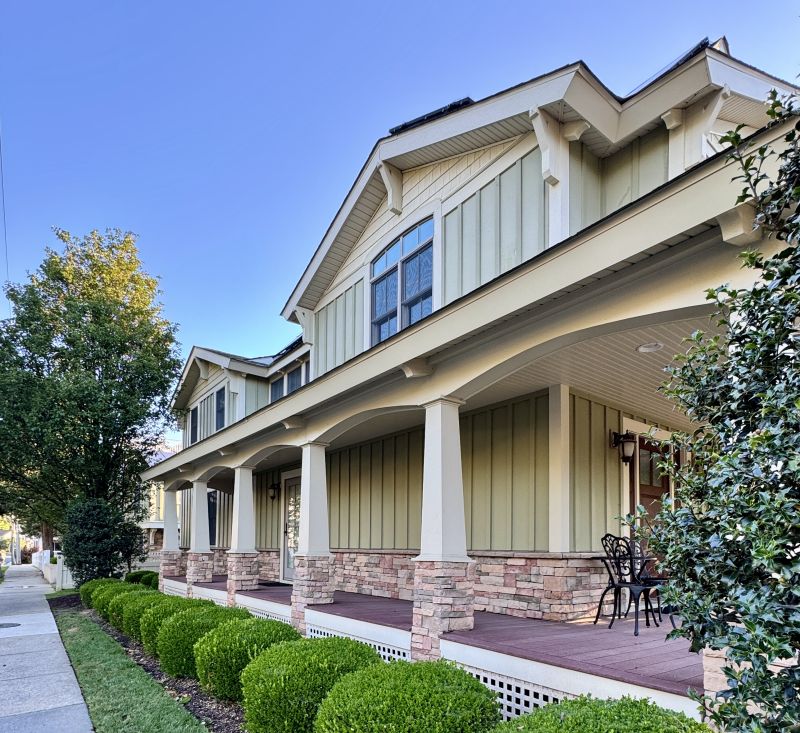It’s a rare human who would turn down a luxury home. And many may think that a luxury home is an enormous mansion that’s fully staffed and decorated in expensive artwork and rare finishes. But a luxury home can be simple and small, too. What defines luxury is superb design that suits the environment and the humans who occupy it.

A well-designed space often goes unnoticed by most people. The objective of good design is creating human-centered spaces that create easy navigation and interaction with the built environment. Some may notice the layout, the light, or the proportions.
Others may become captivated by smaller details: The handle you turn. The switch you press. The pull you reach for every morning. These are the objects that shape the experience of a home. You feel them again and again, often without thinking. Their texture, their weight, and even the sound they make carry more influence than we give them credit for. Fixtures are everyday tools, but they’re also the way we connect physically with the spaces we live in.
Fixtures as an Interface with Architecture
Architecture sets the backdrop with walls, ceilings, and proportions. And interior architecture provides the fixtures we touch everyday. They’re the handshake between us and the building. A door latch, a faucet, a light switch, a countertop—each one has to do its job, but it also signals how much care has gone into the space as a whole. When a switch clicks smoothly or a lock turns with precision, you don’t have to think about it. The action feels natural. Over time, those small interactions build up into a lasting impression of whether a space feels considered or makeshift.
Quality–the essence of a luxury home–here is about more than appearance. It’s in how materials respond to constant handling, how mechanisms keep their integrity, and how surfaces age without giving way too soon. Fixtures with solid engineering and honest finishes hold up over decades, and you feel that tactile luxury every day you use them.
Material Honesty and Longevity
Fixtures are subject to friction, oils from skin, cleaning products, and mechanical stress. Cheaper materials often attempt to mimic premium finishes but degrade quickly, exposing the compromise. Brass, bronze, and stainless steel acquire patina rather than decay. High-grade ceramics retain integrity under constant handling, as long as they don’t suffer a direct impact. The value of such materials is not decorative but functional: they wear predictably and with dignity.
Longevity is also an environmental responsibility. A door latch that functions reliably for decades reduces waste compared to replacements driven by mechanical failure or surface deterioration. Considering the cumulative effect of every fixture in a building, material honesty is a sustainable living.
Cohesion Across the Interior
Fixtures are not isolated objects. Consistency across switches, handles, and lighting defines the continuity of an interior. When finishes, forms, and proportions are unified, they provide a subtle visual rhythm. This cohesion anchors the architectural language, preventing the disjointedness that results when disparate fixtures are combined without a guiding principle.
Companies such as Corston architectural hardware & lighting approach this challenge by designing families of fixtures intended to work together across an entire home. The result is not a series of interchangeable products, but a coherent set of tactile luxury elements that integrate with the architecture, supporting both practical use and visual harmony.
The Economics of Investment
Fixtures usually represent a small percentage of overall construction cost, but they are among the most discussed among homebuyers and the most interacted-with elements. Their impact on perception is disproportionate to their budget line. Investing in higher quality shifts costs forward, but reduces the hidden expenses of replacement, maintenance, and dissatisfaction. For homeowners, it establishes long-term ease of use and a sense of reliability.
In the end, it’s the handles, switches, and latches that tell you most about how a space works day to day. They’re the markers of durability and attention to detail. Good fixtures stay solid through years of use and still feel right under the hand. They hold the architecture together in ways that go beyond appearance. Choosing them carefully is less about display and more about making sure the everyday rhythm of a space holds steady long after the paint has dried.

